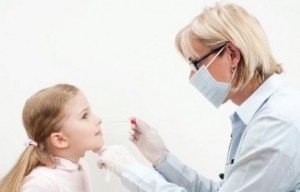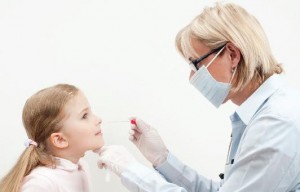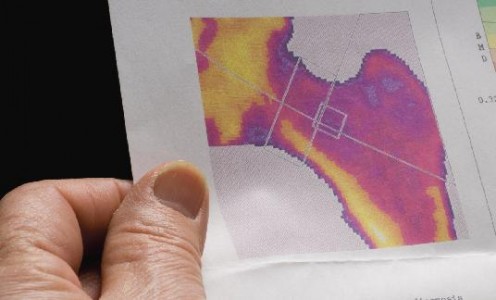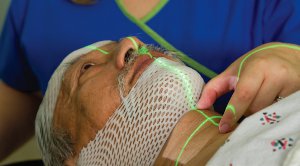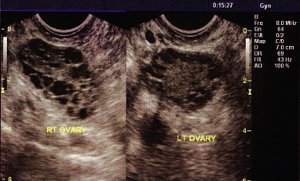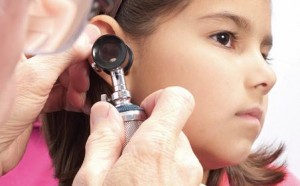 Introduction
Introduction
The Australian Indigenous versus non-Indigenous mortality gap is worse in Australia than in any other Organisation for Economic Coopera tion and Development nation with disadvantaged Indigenous populations, including Canada, New Zealand, and the USA. [1] This gap reached a stark peak of seventeen years in 1996-2001. [2] Otitis media affects 80% of Australian children by the age of three years, being one of the most common diseases of childhood. [3]
Whilst ear diseases and their complications are now rarely a direct cause for mortality, especially since the advent of antimicrobial therapy and the subsequent reduction in extracranial and intracranial complications, [4] the statistics of ear disease nevertheless illustrate the unacceptable disparity between the health status of these two populations cohabiting a developed nation, and are an indictment of the poor living conditions in Indigenous communities. [5] Moreover, the high prevalence of ear disease among Aboriginal and Torres Strait Islanders is associated with secondary complications that represent significant morbidity within this population, most notably conductive hearing loss, which affects up to 67% of school-age Australian Indigenous children. [6]
This article aims to illustrate the urgent need for the development of appropriate strategies and programs, which are founded on evidencebased research and also integrate cultural consideration for, and design input from, the Indigenous communities, in order to reduce the medical and social burden of ear disease among Indigenous Australians.
Methodology
This review covered recent literature concerning studies of ear disease in the Australian Indigenous population. Medical and social science databases were searched for recent publications from 2000-2011. Articles were retrieved from The Cochrane Library, PubMed, Google Scholar and BMJ Journals Online. Search terms aimed to capture a broad range of relevant studies. Medical textbooks available at the medical libraries of Notre Dame University (Western Australia) and The University of Western Australia were also used. A comprehensive search was also made of internet resources; these sources included the websites of The Australian Department of Health and Ageing, the World Health Organisation, and websites of specific initiatives targeting ear disease in the Indigenous Australian population.
Peer reviewed scientific papers were excluded from this review if ear disease pertaining to Indigenous Australians was not a major focus of the paper. Studies referred to in this review vary widely in type by virtue of the multi-faceted topic addressed and include both qualitative and quantitative studies. For the qualitative studies, those that contributed new information or covered areas that had not been fully explored in quantitative studies were included. Quantitative studies with weaknesses arising from small sample size, few factors measured or weak data analysis were included only when they provided insights not available from more rigorous studies.
Overview and epidemiology
The percentage of Australian Indigenous children suff ering otitis media and its complications is disproportionately high; up to 73% by the age of twelve months. [7] In the Australian primary healthcare settng, Aboriginal and Torres Strait Islander children are five times more likely to be diagnosed with severe otitis media than non-Indigenous children. [8]
Chronic suppurative otitis media (CSOM) is uncommon in developed societies and is generally perceived as being a disease of poverty. The World Health Organisation (WHO) states that a prevalence of CSOM greater than or equal to 4% indicates a massive public health problem of CSOM warranting urgent attention in targeted populations. [9] CSOM affects Indigenous Australian children up to ten times this proportion, [5] and fifteen times the proportion of non-Indigenous Australian children, [8] thus reflecting an unacceptably great dichotomy of the prevalence and severity of ear disease and its complications between Indigenous and non-Indigenous Australians.
Comparisons of the burden of mortality and the loss of disabilityadjusted life years (DALYs) have been attempted between otitis media (all types grouped together) and illnesses of importance in developing countries. These comparisons show that the burden of otitis media is substantially greater than that of trachoma, and comparable with that of polio, [9] with permanent hearing loss accounting for a large proportion of this DALY burden.
Whilst there are some general indications that the health of Indigenous Australian children has improved over the past 30 years, such as increased birth weight and lower infant mortality, there is evidence to suggest that morbidities associated with infections such as respiratory infections and otitis media have not changed. [10-12]
Middle Ear disease: Pathophysiology and host risk factors
The disease process of otitis media is a complex and dynamic continuum. [10] Hence there is inconsistency throughout the medical community regarding defi nitions and diagnostic criteria for this disease, and controversy regarding what constitutes “gold standard” treatment. [7,13] In order to form a discussion about the high prevalence of middle ear diseases in Indigenous Australians, one must first establish an understanding of their aetiology and pathogenicity. Host-related risk factors for otitis media include young age, high rates of nasopharyngeal colonisation with potentially pathogenic bacteria, eustachian tube dysfunction and palato-facial abnormalities, lack of passive immunity and acquisition of respiratory tract infections in the early stages of life. [7,9,10,14,15]
Streptococcus pneumoniae, Haemophilus influenzae and Moraxella catarrhalis are the recognised major pathogens of otitis media. However, this disease has a complex, polymicrobial aetiology, with at least fifteen other genera having been identified in middle ear eff usions. [11] The organisms involved in CSOM are predominantly opportunistic organisms, especially Pseudomonas aeruginosa, which is associated with approximately 20-50% of CSOM in both Aboriginal, Torres Strait Islander and non-Indigenous children. [10]
Relatively new findings in otitis media pathogenicity have included the identification of Alloiococcus otitidis and human metapneumovirus. [13] A. otitidis in particular, a slow-growing aerobic gram positive bacterium, has been identified in as many as 20-30% of middle ear eff usions in children with CSOM. [13,16,17] The importance of interaction between viruses and bacteria (with the major identified viruses being adenovirus, rhinovirus, polyomavirus and more recently human metapneumovirus) is well recognised in the pathogenicity of otitis media. [13,18,19] High identification rates of viral-bacterial co-infection found in asymptomatic children with otitis media (42% Indigenous and 32% non-Indigenous children) underscore the potential value in preventative strategies targeted at specific pathogens. [19] The role of biofi lms in otitis media pathogenesis has been of great interest since a fluorescence in-situ hydridisation study detected biofi lms in 92% of middle ear mucosal biopsies from 26 children with recurrent otitis media or otitis media with eff usion. [20] This suggested an explanation for the persistence and recalcitrance of otitis media, as bacteria growing in biofi lm are more resistant to antibiotics than planktonic cells. [20]
However, translating all this knowledge into better health outcomes – by means of individual clinical treatment and community preventative strategies – is not straightforward. A more thorough understanding of the polymicrobial pathogenesis is needed if more effective therapies for otitis media are to be achieved.
Some research has been involved in the possibility of a genetic predisposition to otitis media, based on its high prevalence observed across several Indigenous populations around the world, including the Indigenous Australian, Inuit, Maori and Native American peoples. [10] However, whilst the suggestion that genetic factors may play a role in otitis media susceptibility is a worthwhile area of further research, its emphasis should not overlook the significance of poverty, which generally exists throughout colonised Indigenous populations worldwide and is a major public health risk factor. It should be remembered that socioeconomic status is a major determinant of disparities in Indigenous health, irrespective of genetics or ethnicity.
Environmental risk factors
The environmental risk factors for otitis media are well recognised and extensively documented. They include season, inadequate housing, overcrowding, poor hygiene, lack of breastfeeding, pacifier use, poor nutrition, exposure to cigarette or wood-burning smoke, poverty and inadequate or unavailable health care. [5,7,9,10,21]
Several recent studies have examined the impact of overcrowding and poor housing conditions on the health of Indigenous children, with a particular focus on upper respiratory tract infections and ear disease. [22-24] The results of these studies reinforced the belief that elements of the household and community environment are important underlying determinants of the occurrence of common childhood conditions, which impair child growth and development, contribute to the risk of chronic disease and to the seventeen year gap in life expectancy between Aboriginal and Torres Strait Islander people and non-Indigenous Australians. [22, 23] Interestingly, one study’s findings identified the potential need for interventions which could target factors that negatively impact the psychosocial status of carers and which could also target health-related behaviour, including maintenance of household and personal hygiene. [22]
Raised levels of stress and poor mental health associated with the psycho-spatial elements of overcrowded living (that is, increased interpersonal contact, lack of privacy, loss of control, high demand, noise, lack of sleep) may therefore be considered as having a negative impact on the health of dwellers, especially those whose health largely depends on care from others, such as the elderly and young children, who are more susceptible to disease. Urgent attention is needed to improve housing and access to clean running water, nutrition and quality of care, and to give communities greater control over these improvements.
Exposure to environmental smoke is another significant, yet potentially preventable, risk factor for respiratory infections and otitis media in Indigenous children. [25,26] Of all the environmental risk factors for otitis media mentioned above, environmental smoke exposure is arguably the most readily amenable to modification. A recent randomised controlled trial tested the efficacy of a family-centred tobacco control program, aimed at reducing the incidence of respiratory disease among Indigenous children in Australia and New Zealand. It was found that interventions aimed at encouraging smoking cessation as well as reducing exposure of Indigenous children to environmental smoke had the potential for significant benefit, especially when the intervention designs included culturally sound, intensive family-centred programs that emphasised capacitybuilding of the Indigenous community. [25] Such studies testify to the potentially high levels of interest, cooperativeness, pro-activeness and compliance demonstrated by Indigenous communities regarding public health interventions, given the study design is culturally appropriate and accepts that Indigenous people need to be meaningfully engaged in preventative health efforts.
Preventative strategies
The advent of the 7-valent pneumococcal conjugate vaccine has seen a substantial decrease in invasive pneumococcal disease. However, changing patterns of antibiotic resistance and pneumococcal serotype replacement have been documented since the introduction of the vaccine, and large randomised controlled trials have shown its reduction of risk of acute otitis media and tympanic membrane perforation to be minimal. [13,27] One retrospective cohort study’s data suggested that the pneumococcal immunisation program may be unexpectedly increasing the risk of acute lower respiratory infection (ALRI) requiring hospitalisation among vaccinated children, especially after administration of the 23vPPV booster at eighteen months of age. [28] These findings warrant re-evaluation of the pneumococcal immunisation program and further research into alternative medical prevention strategies.
Swimming pools in remote communities have been associated with reduced prevalence of tympanic membrane perforations (as well as pyoderma), indicating the long term benefits associated with reduction in chronic disease burden and improved educational and social outcomes. [6] No outbreaks of infectious diseases have occurred in the swimming pool programmes to date and water quality is regularly monitored according to government regulations. On the condition that adequate funding continues to maintain high safety and environmental standards of community swimming pools, their net effect on community health will remain positive and worthwhile.
Treatment: Current guidelines and practices, potential future treatments
Over the last ten years there has been a general tendency to reduce immediate antibiotic treatment for otitis media for children aged over two years, with the “watchful waiting” approach having become more customary among primary care practitioners. [7] The current therapeutic guidelines note that antibiotic therapy provides only modest benefit for otitis media, with sixteen children requiring treatment at first presentation to prevent one child experiencing pain at two to seven days. [29] Routine antibiotics are recommended only for infants less than six months and for all Aboriginal and Torres Strait Islander children at the initial presentation of acute otitis media. [8] Current guidelines acknowledge that suppurative complications of otitis media are common among Indigenous Australians; hence specific therapeutic guidelines apply to these patients. [30] For those patients in whom antibiotics are indicated, a twice-daily regimen, five day course of amoxicillin is the antibiotic agent of choice. Combined therapy with a seven day course of higher-dose amoxicillin and clavulanate is recommended for poor response to amoxicillin or patients in high-risk populations for amoxicillin-resistant Streptococcus pneumoniae. For CSOM, topical ciprofl oxacin drops are now approved for use in Aboriginal and Torres Strait Islander children, since a study in 2003 contributed to their credibility in the treatment of CSOM. [31,32]
Treatment failure with antibiotics has been observed in some Aboriginal and Torres Strait Islander communities due to poor adherence to the twice-daily regimen of five and seven day courses of amoxicillin. [33] The reasons for non-adherence remain unclear. They may relate to language barriers (misinterpretation or non-comprehension of instructions regarding antibiotic use), storage (lacking a home fridge in which to keep the antibiotics), shared care of the child patient (rather than one guardian) or remoteness (reduced access to healthcare facility and reduced likelihood of follow-up). Treatment failure with antibiotics has also been noted in cases of optimal compliance in Indigenous communities, indicating that poor clinical outcomes may also be due to organism resistance and/or pathogenic mechanisms. [11]
A recent study compared the clinical effectiveness of a single-dose azithromycin treatment with the recommended seven day course of amoxicillin among Indigenous children with acute otitis media in rural and remote communities in the Northern Territory. [33] Whilst azithromycin was found to be more effective at eradicating otitis media pathogens than amoxicillin, azithromycin treatment was associated with an increase in carriage of azithromycin-resistant Streptococcus pneumoniae. Another recent study investigated the antimicrobial susceptibility of Moraxella catarrhalis isolated from a cohort of children with otitis media in the Kalgoorlie-Boulder region of Western Australia. [34] It was found that a large proporstion of strains were resistant to ampicillin and/or co-trimoxazole. Findings from studies such as these indicate that the current therapeutic guidelines, which recommend amoxicillin as the antibiotic of choice for treatment of otitis media, may require revision.
Overall, further research is needed to determine which antibiotics best eradicate otitis media pathogens and reduce bacterial load in the nasopharynx in order to achieve better clinical outcomes. Recent studies indicate that currently recommended antibiotics may need to be reviewed in light of increasing rates of resistant organisms and emerging evidence of new organisms.
Social ramifications associated with ear disease
There is substantial evidence to demonstrate that ear disease has a significant negative impact on the developmental future of Aboriginal and Torres Strait Islander children. [35] Children who are found to have early-onset otitis media (under twelve months) are at high risk of developing long-term speech and language problems secondary to conductive hearing loss, with the specific areas of cognition thought to be affected being auditory processing, attention, behaviour, speech and language. [36] Between 10% and 67% of Indigenous Australian school age children have perforated tympanic membranes, and 14% to 67% have some degree of hearing loss. [37]
Sub-optimal hearing can be a serious handicap for Indigenous children who begin school with delayed oral skills, especially if English is not their first language. Learning the phonetics and grammar of a second language with the unrecognised disability of impaired hearing renders the classroom experience a difficult and unpleasant one for the student, resulting in reduced concentration and increased distractibility, boredom and non-attendance. Truancy predisposes to anti-social behaviour, especially among adolescents, who by this age tend to no longer have infective ear disease but do have established permanent hearing loss. [38] Poor engagement in education and employment, alcohol-fuelled interpersonal violence, domestic violence, and communication difficulties with police and in court have all been linked to the disadvantage of hearing loss and the eventuation of becoming involved in the criminal justice system. [39]
In the Northern Territory, where the Indigenous population accounts for only 30% of the general population, 82% of the 1100 inmates in Northern Territory correctional facilities in the year 2010 were found to be Aboriginal or Torres Strait Islander. [40] Two recent studies conducted within the past two years investigated the prevalence of hearing loss among inmates in Northern Territory correctional facilities. They found that more than 90% of Australian Indigenous inmates had a significant hearing loss of >25dB. [39] A third study in a youth detention centre in the Northern Territory demonstrated that as many as 90% of Australian Indigenous youth in detention may have hearing loss, [41] whilst yet another study found that almost half the female Indigenous inmates at a Western Australian prison had significant hearing loss, almost ten-fold that of the non-Indigenous inmates. [37]
The fact that the Northern Territory study of adult inmates showed a comparatively low prevalence of hearing loss among Indigenous persons who weren’t imprisoned (33% not imprisoned compared with 94% imprisoned) [39] demonstrates a strong correlation between the high prevalence of hearing loss and the over-representation of Indigenous people in Australian correctional facilities. Although this area warrants further research, the data from these studies demonstrate that the higher prevalence of hearing loss among Indigenous inmates suggests that ear disease and hearing loss may have played a role in many Aboriginal and Torres Strait Islander people becoming inmates.
Changes and developments for the future
As we have discussed throughout this article, the unacceptably high burden of ear disease among Indigenous Australians is due to a myriad of medical, biological, socio-cultural, pedagogical, environmental, logistical and political factors. All of these contributing factors must be addressed if a reduction in the morbidity and social ramifications associated with ear disease among Indigenous Australians is to be achieved. The great dichotomy in health service provision could eventually be eradicated if there is the political will and sufficient, specific funding.
Addressing these factors will require the integration of multi- disciplinary efforts from medical researchers, health care practitioners, educational professionals, correctional facilities, politicians, and most importantly the members of Indigenous communities. The latter’s active involvement in, and responsibility for, community education, prevention and medical management of ear disease are imperative to achievement of these goals.
The Government’s response to a recent federal Senate inquiry into Indigenous ear health included $47.7 million over four years to support changes to the Australian Government’s Hearing Services Program (HSP). This was in addition to other existing funds available to eligible members of the hearing-impaired, such as the More Support for Students with Disabilities Initiative and the Better Start for Children With a Disability intervention. [42] Whilst this addition to the federal budget may be seen as a positive step in the Government’s agenda to ameliorate the burden of ear health among the Indigenous Australian population, it will not serve any utility if the funding is not sustainably invested and effectively implemented along the appropriate avenues, which should:
1. Specifically target and reduce identified risk factors of otitis media.
2. Support the implementation of effective, evidence-based, public health prevention strategies, and encourage community control over improvements to education, employment opportunities, housing infrastructure and primary healthcare services.
3. Support constructive and practical multidisciplinary research into the areas of pathogenicity, diagnosis, treatment, vaccines, risk factors and prevention strategies of otitis media.
4. Support and encourage training and employment for healthcare and educational professionals in regional and remote areas. These professionals include doctors, audiologists, speech pathologists, and teachers, and all of these professions should off er programs that increase the number of practising Aboriginal and Torres Strait Islander clinicians and teachers.
5. Adequately fund ear disease prevention and medical treatment programs, including screening programs, so that they may expand, increase in their number and their efficacy. Such services should concentrate on prevention education, accurate diagnosis, antibiotic treatment, surgical intervention (where applicable) and scheduled follow-up of affected children. An exemplary program is Queensland’s “Deadly Ears” program. [43]
6. Support the needs of students and inmates with established hearing loss in the educational and correctional environments, for example, through provision of multidisciplinary healthcare services and the use of sound field systems with wireless infrared technology.
7. Support community and family education regarding the effects of hearing loss on speech, language and education.
All of these objectives should be fulfi lled by cost-effective, sustainable, culturally-sensitive means. It is of paramount importance that these objectives should be well-received by, and include substantial input from, Indigenous members of the community. Successful implementation of these objectives reaching the grass-roots level (thus avoiding the so-called “trickle-down” effect) will not only require substantially increased resources, but also the involvement of Indigenous community members in intervention design and deliverance.
Conclusion
Whilst there remains a continuous need for valuable research in the area of ear disease, it appears that failure to apply existing knowledge is currently more of a problem than a dearth of knowledge. The design, funding and implementation of prevention strategies, community education, medical services and programs, and modifications to educational and correctional settings should be the current priorities in the national agenda addressing the burden of ear disease among Aboriginal and Torres Strait Islander people.
Acknowledgements
Thank you to Dr Matthew Timmins and Dr Greg Hill for providing
feedback on this review.
Conflicts of interest
None declared.
Correspondence
S Hill: shillyrat@hotmail.com




